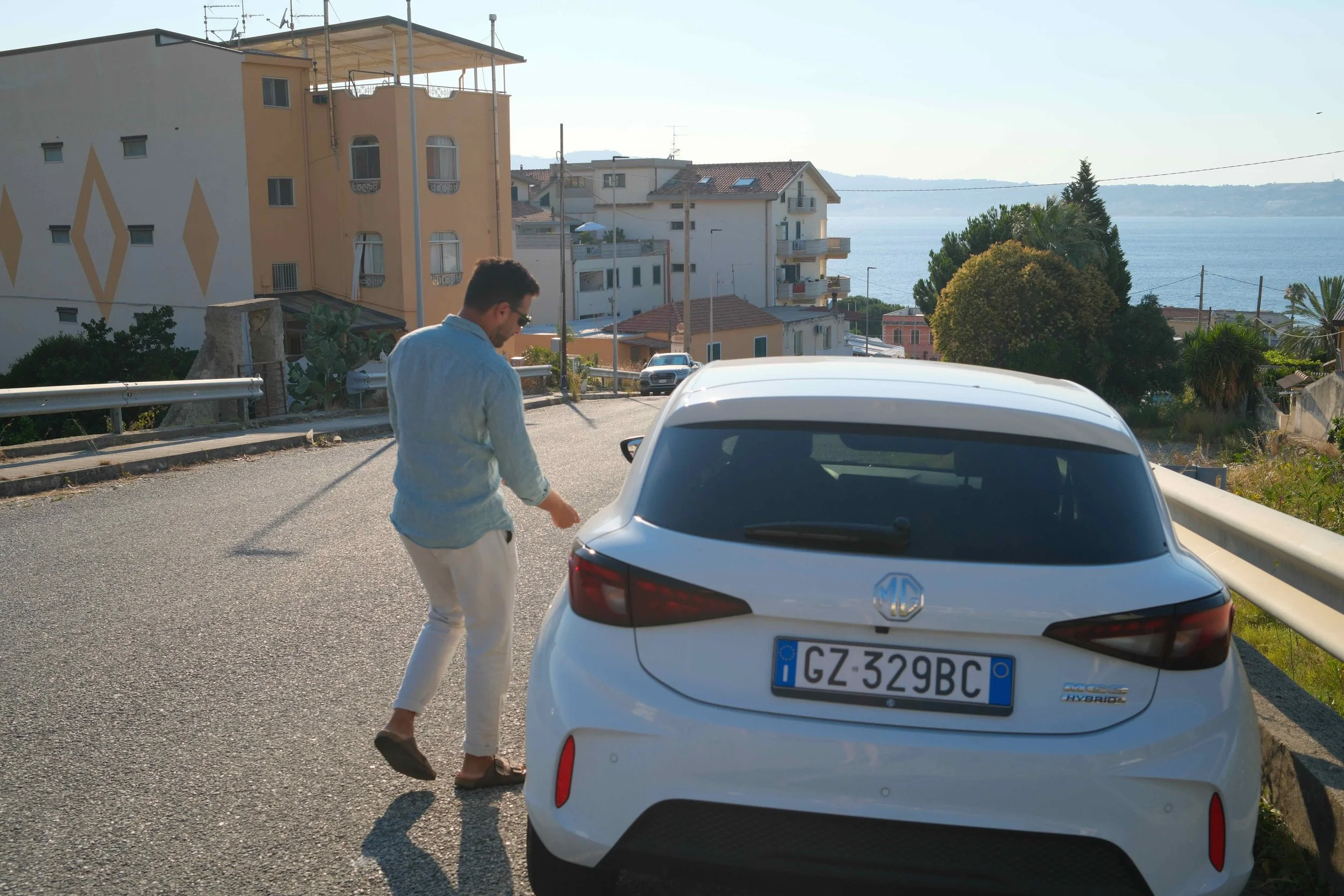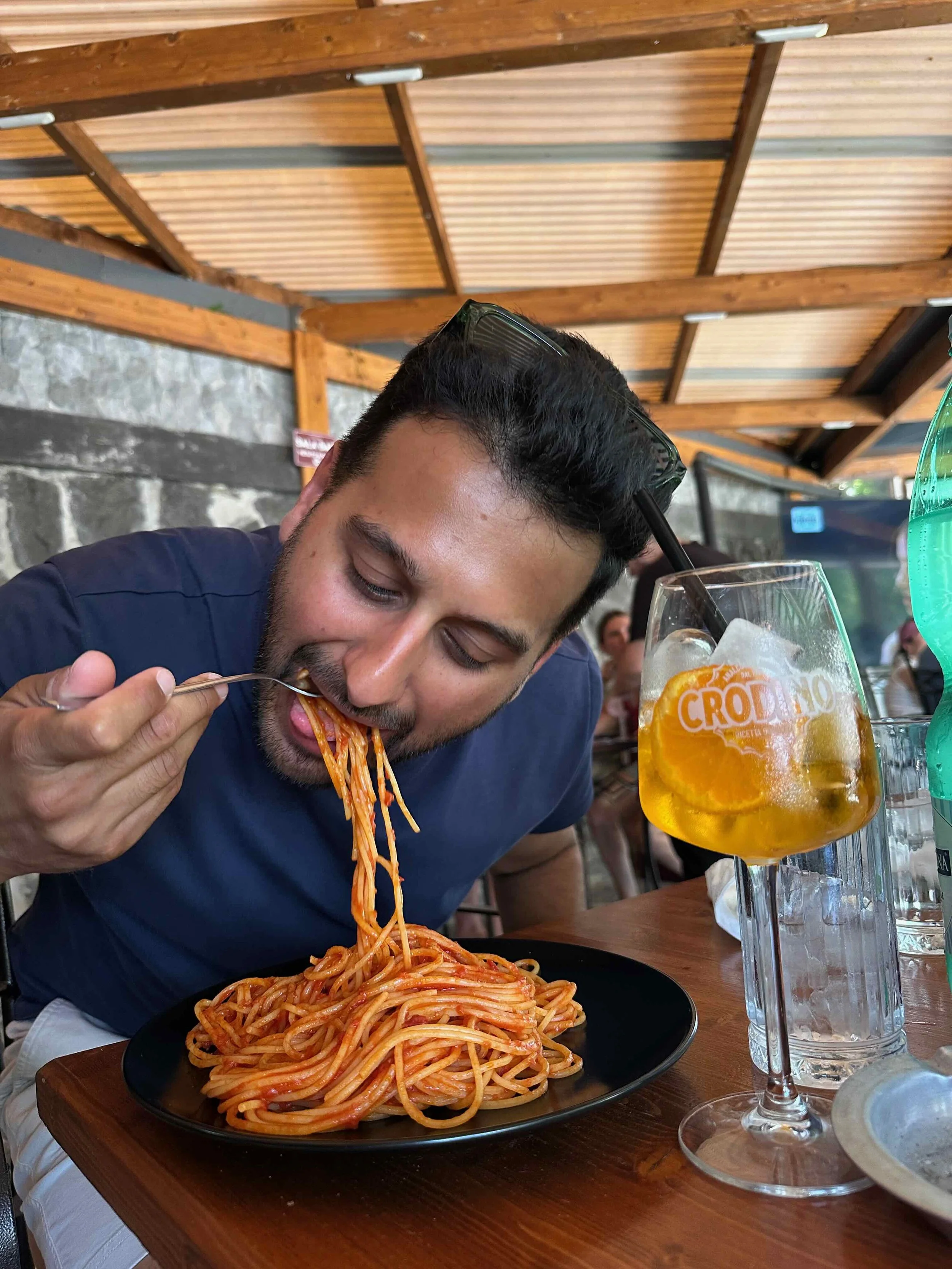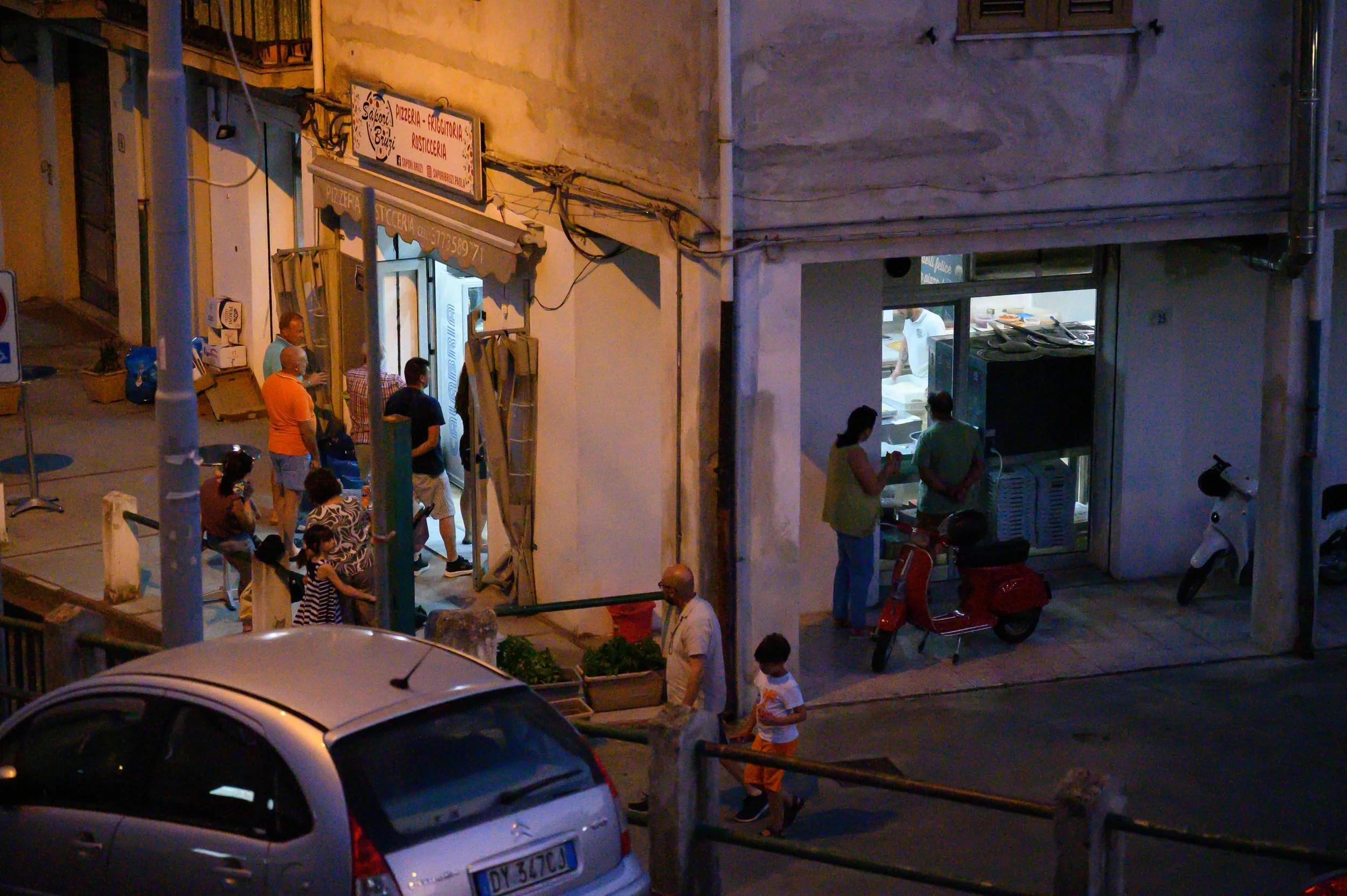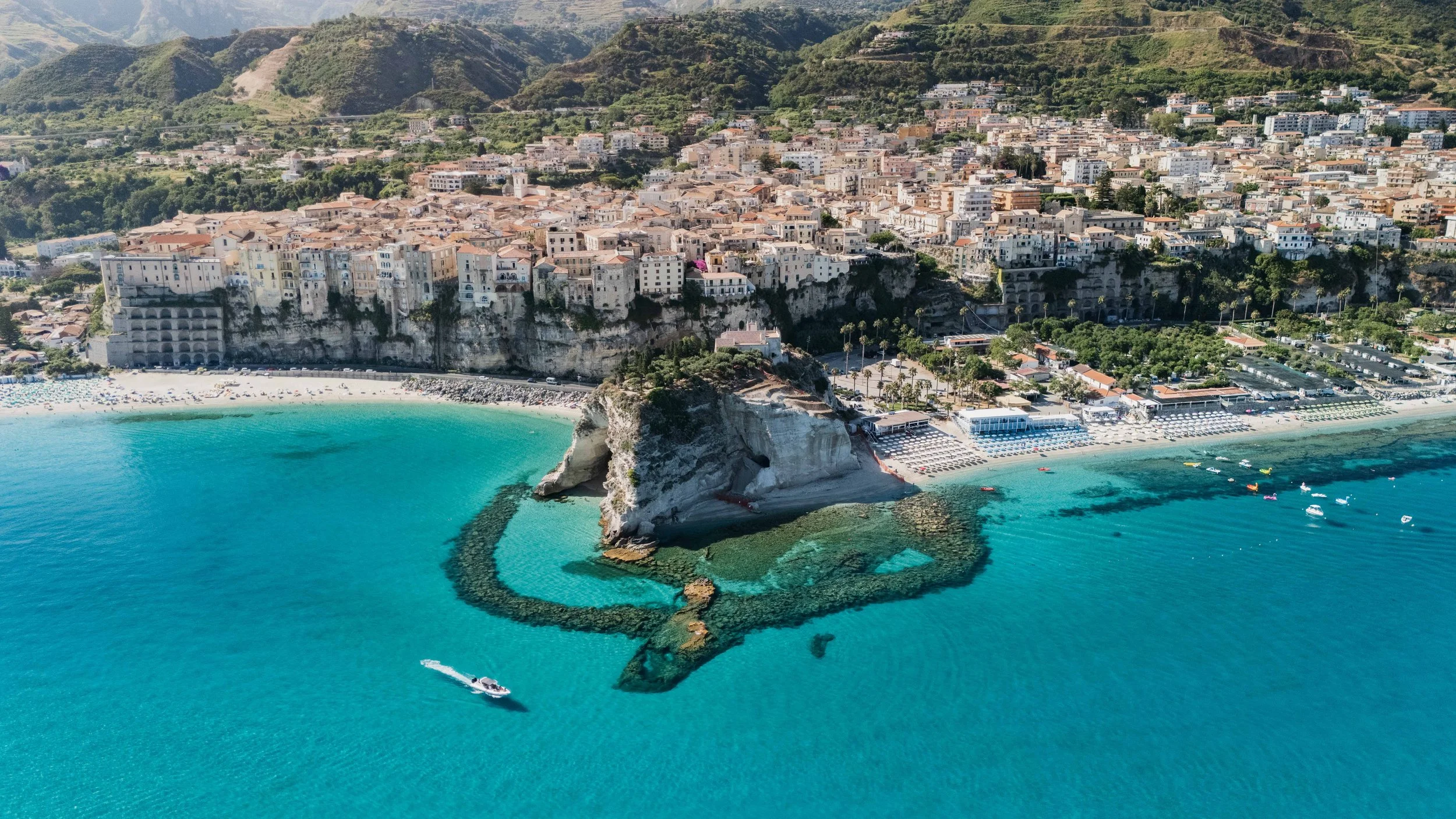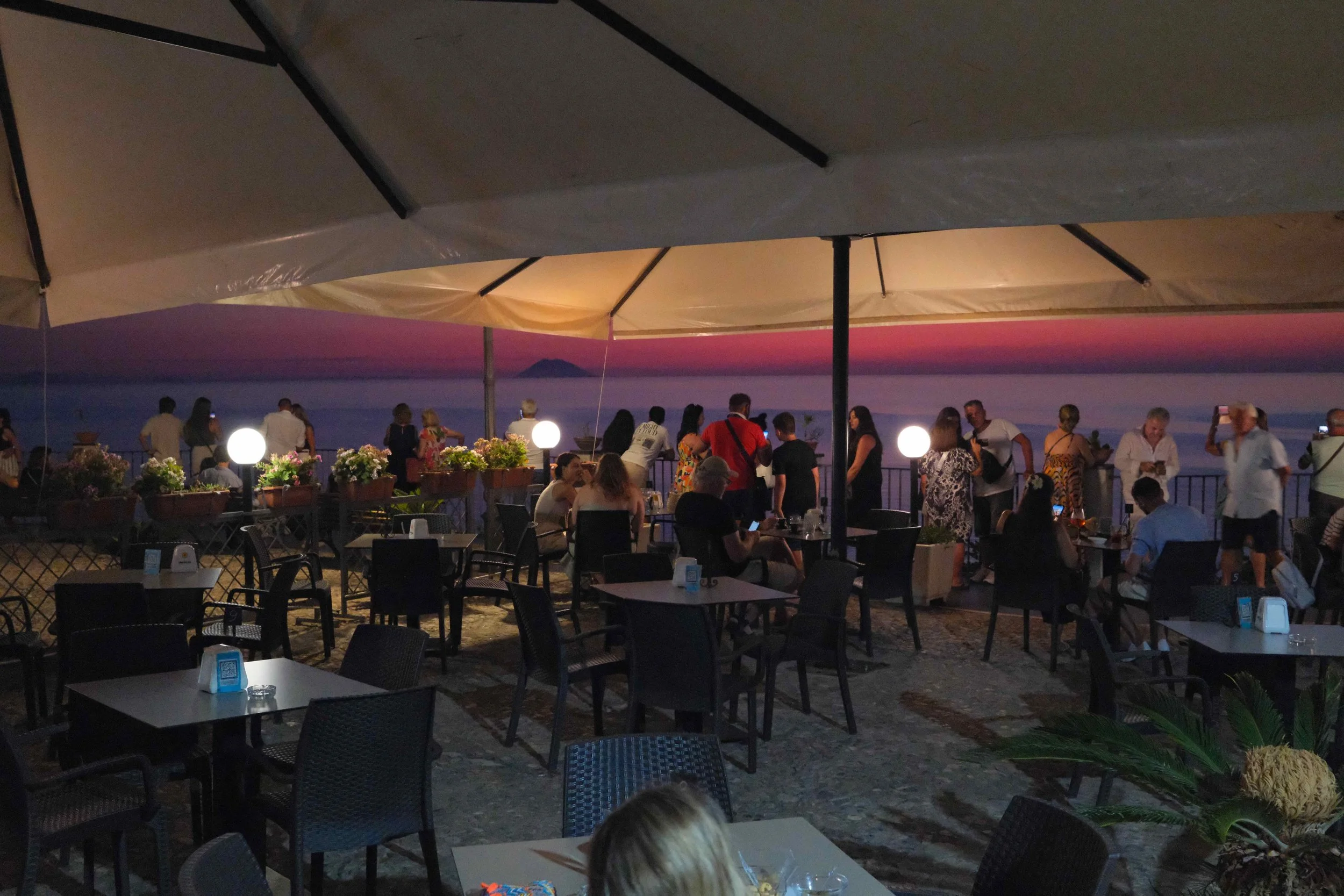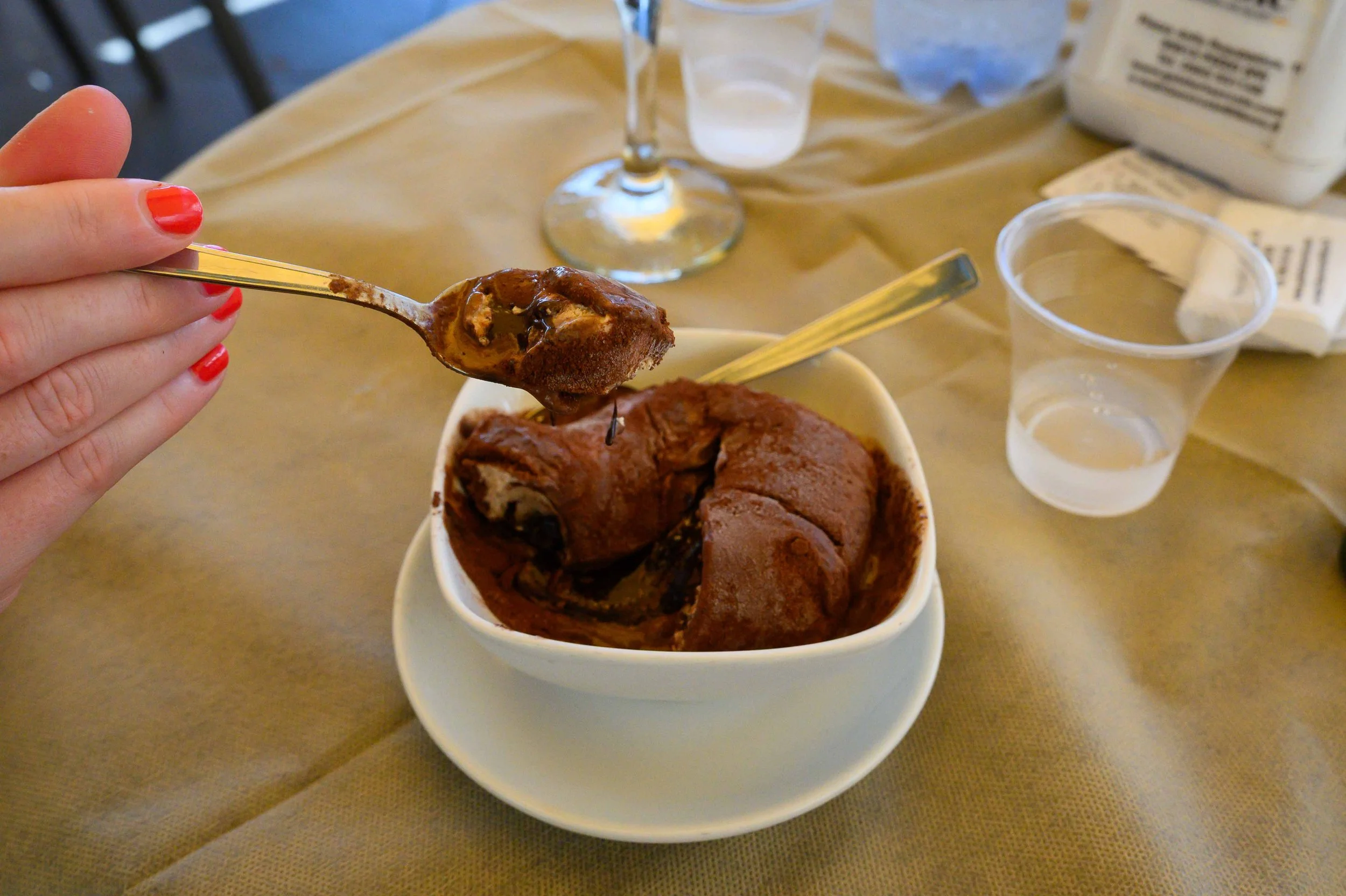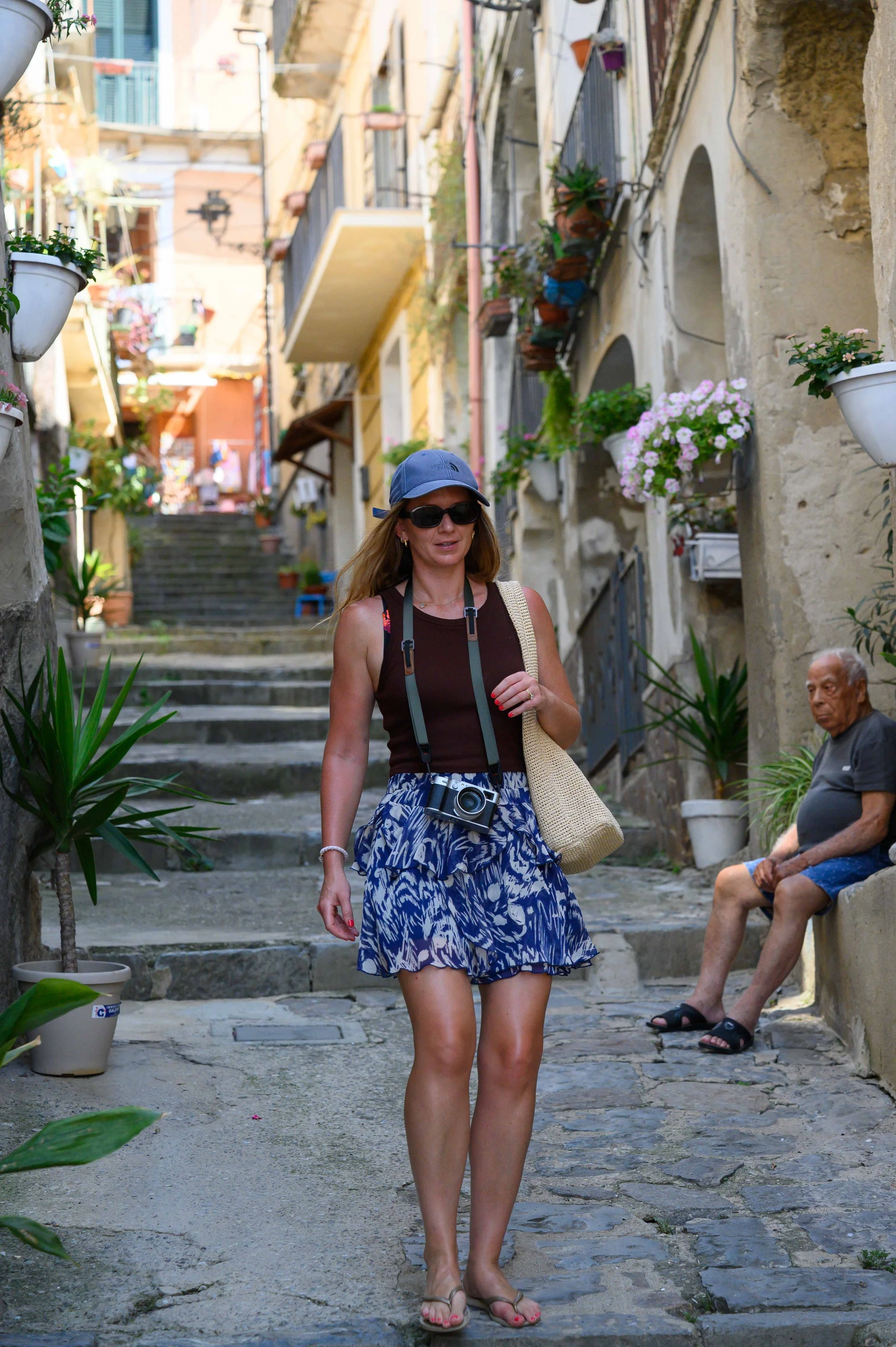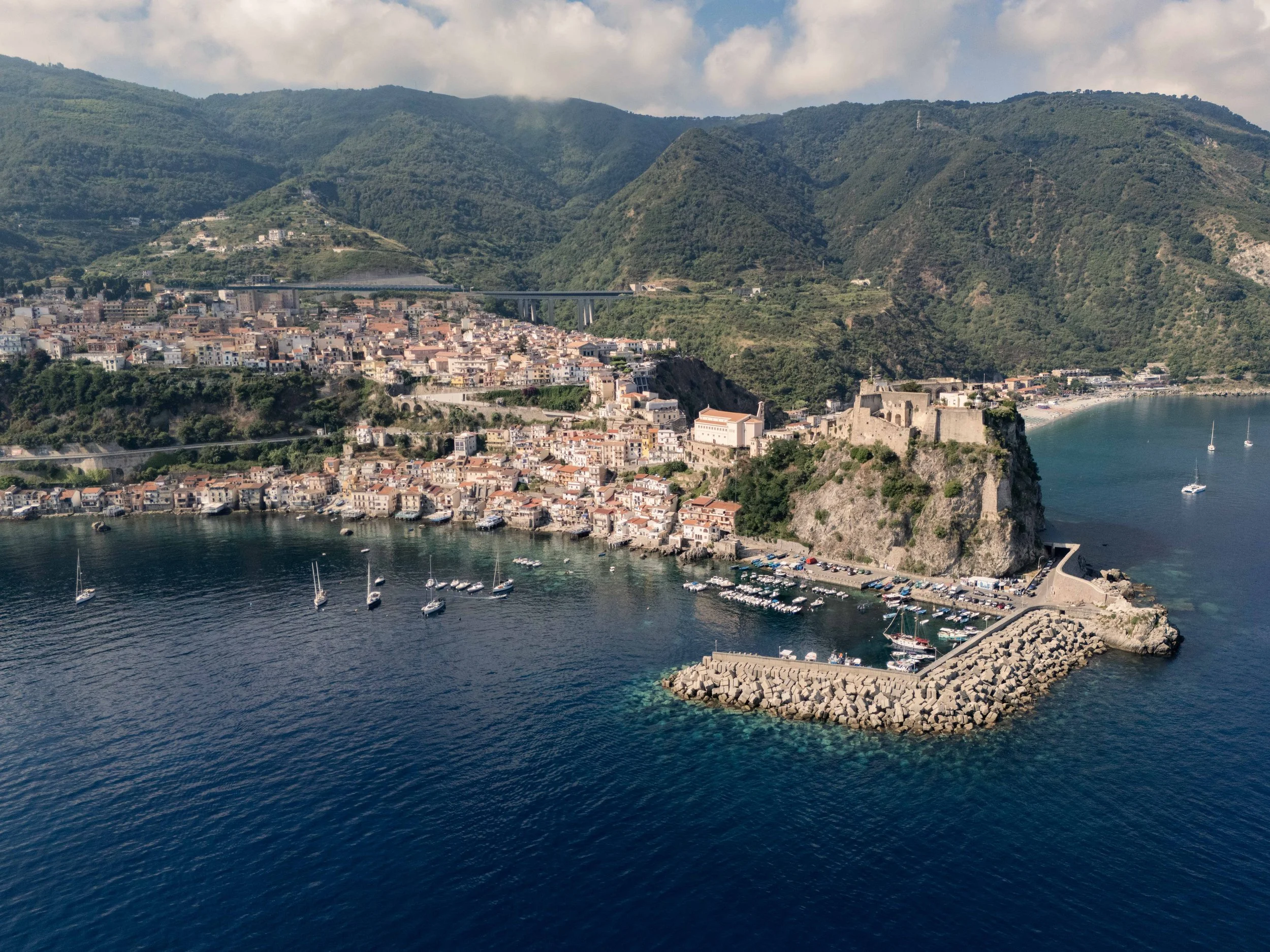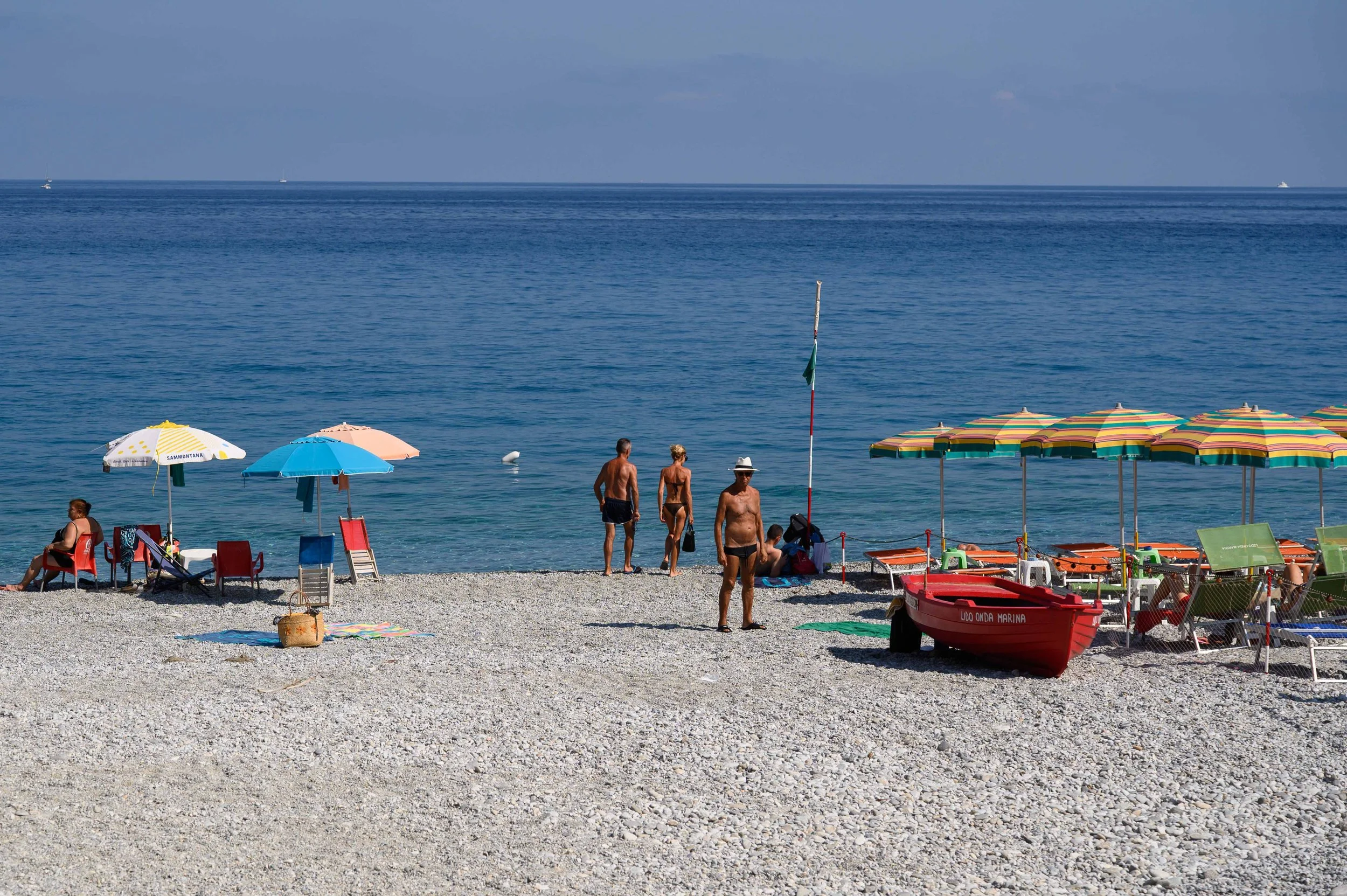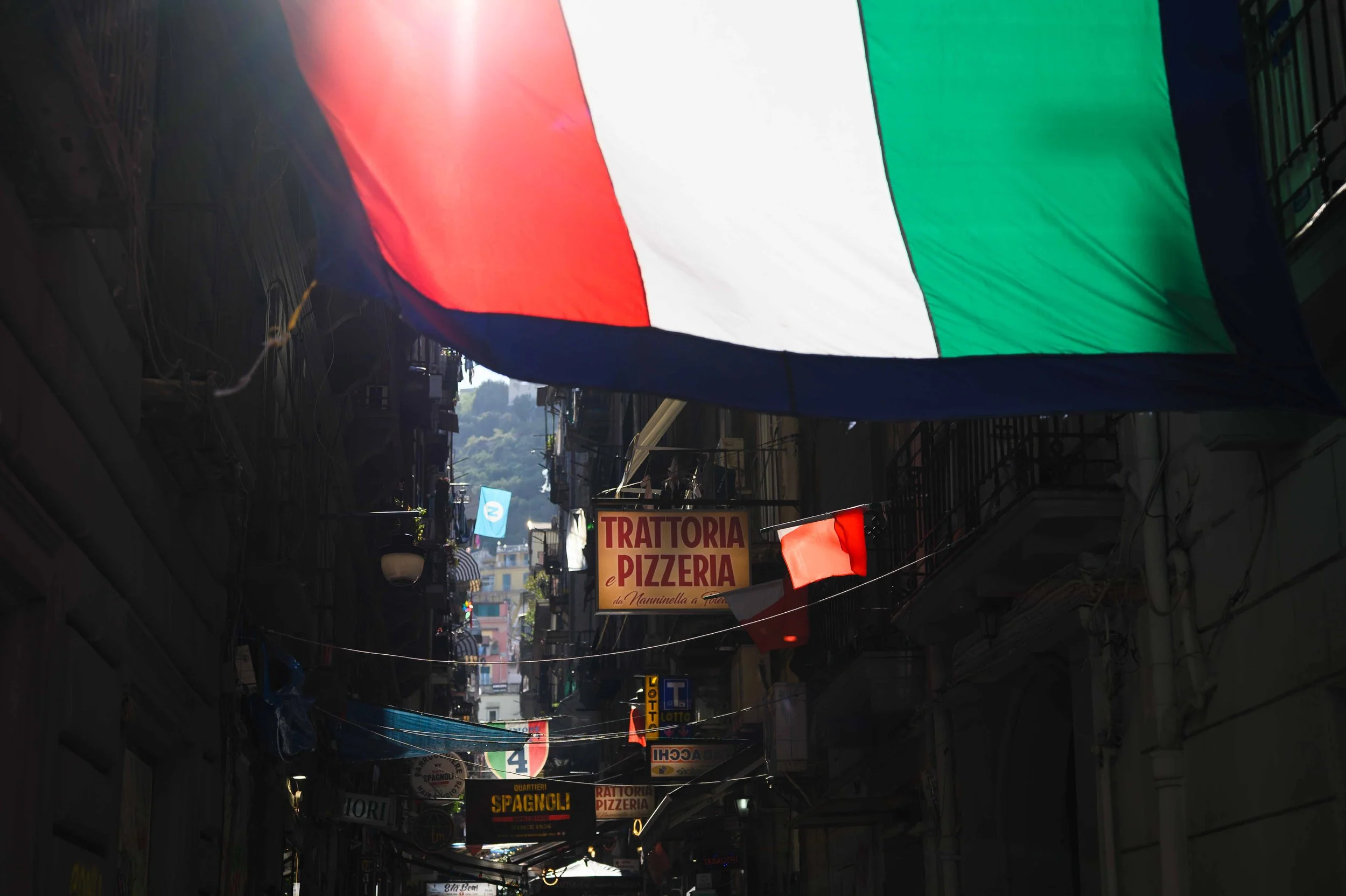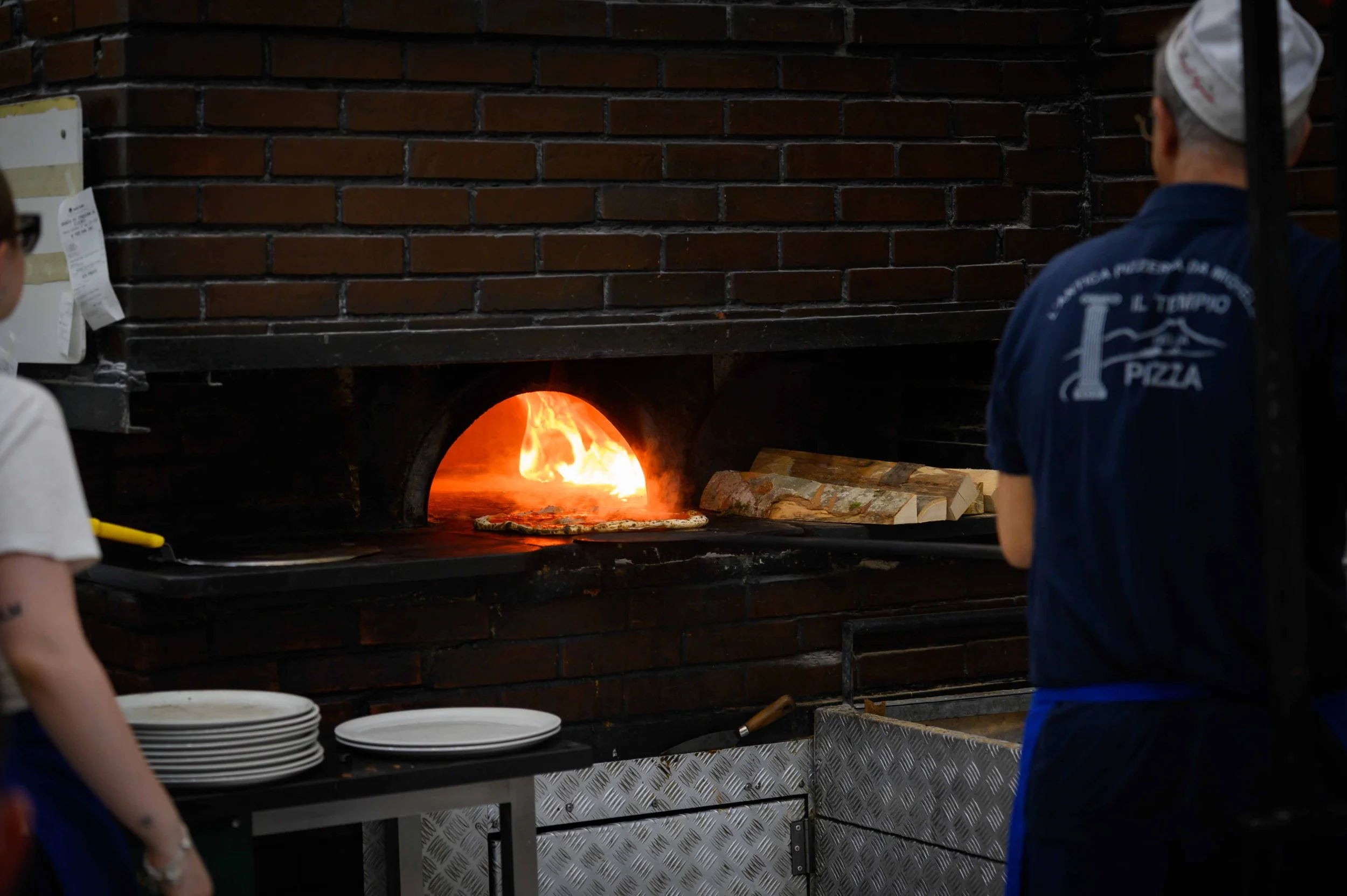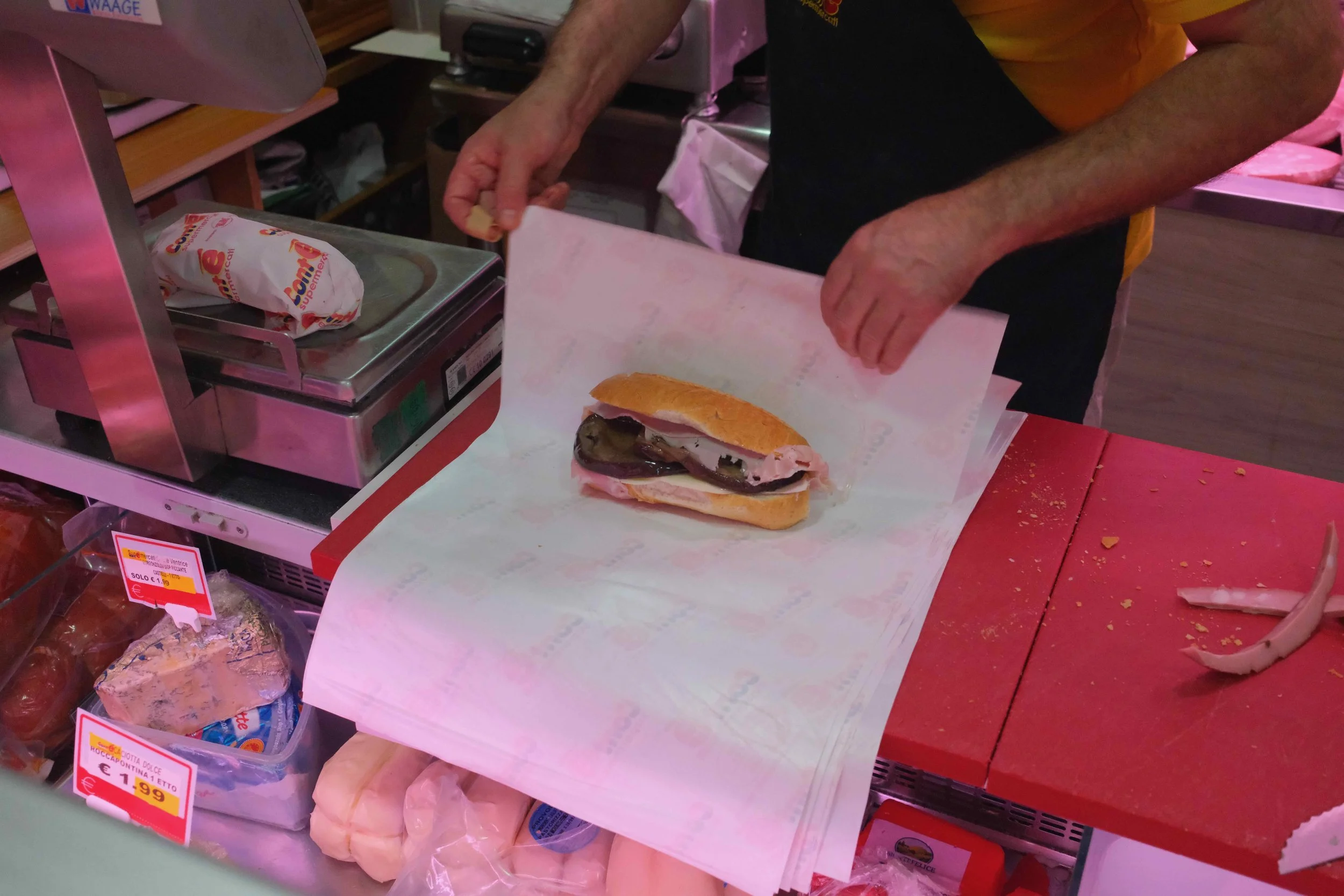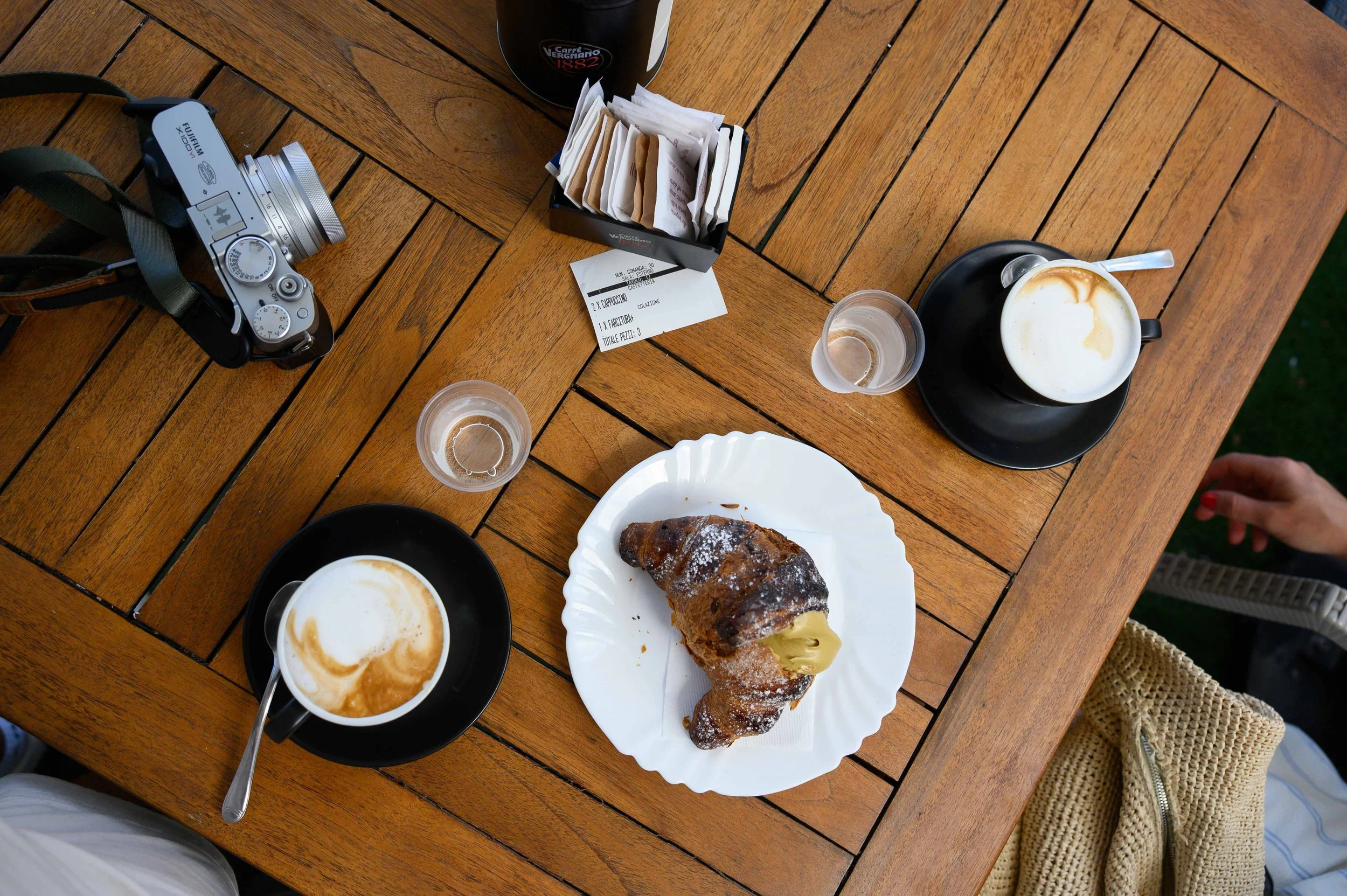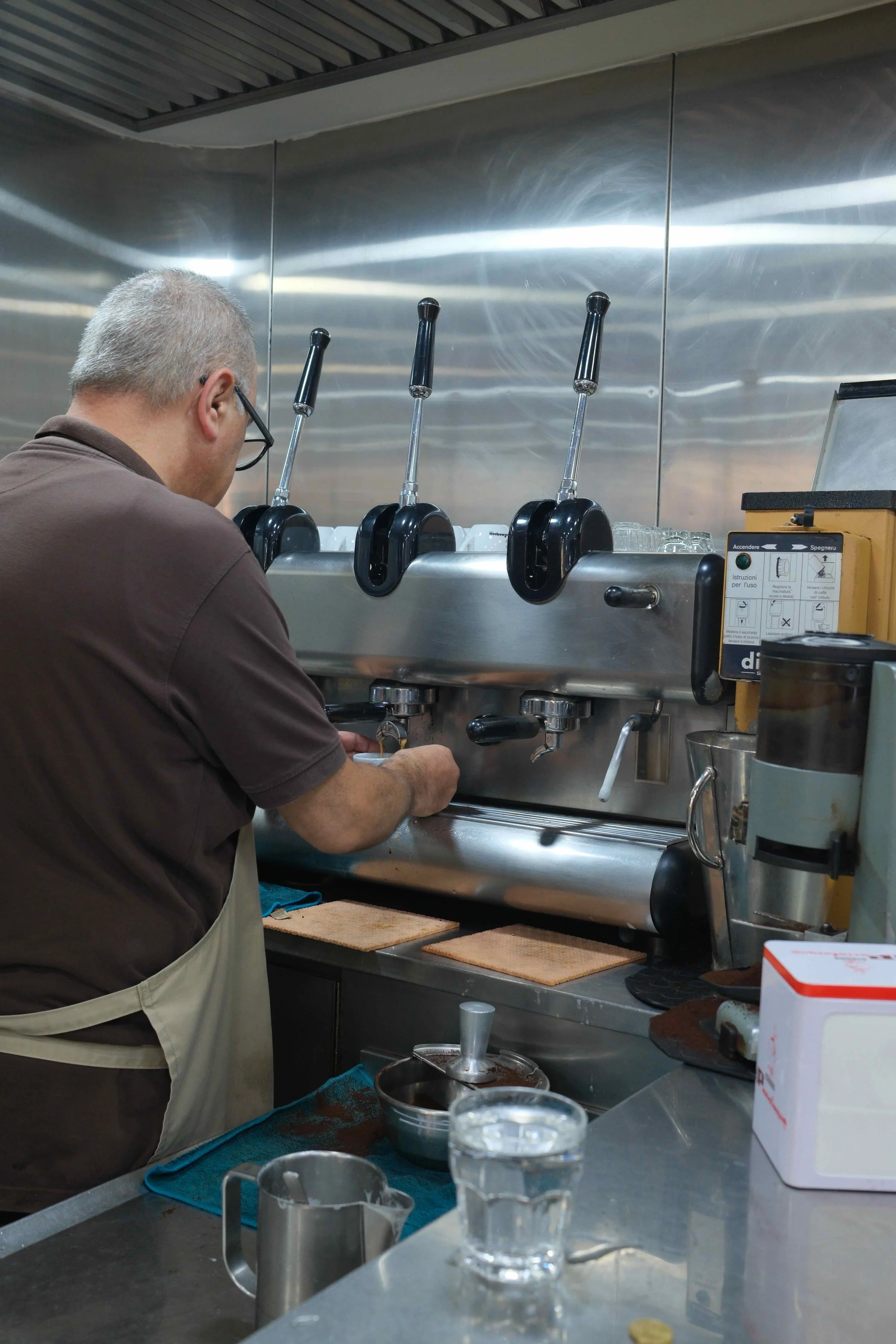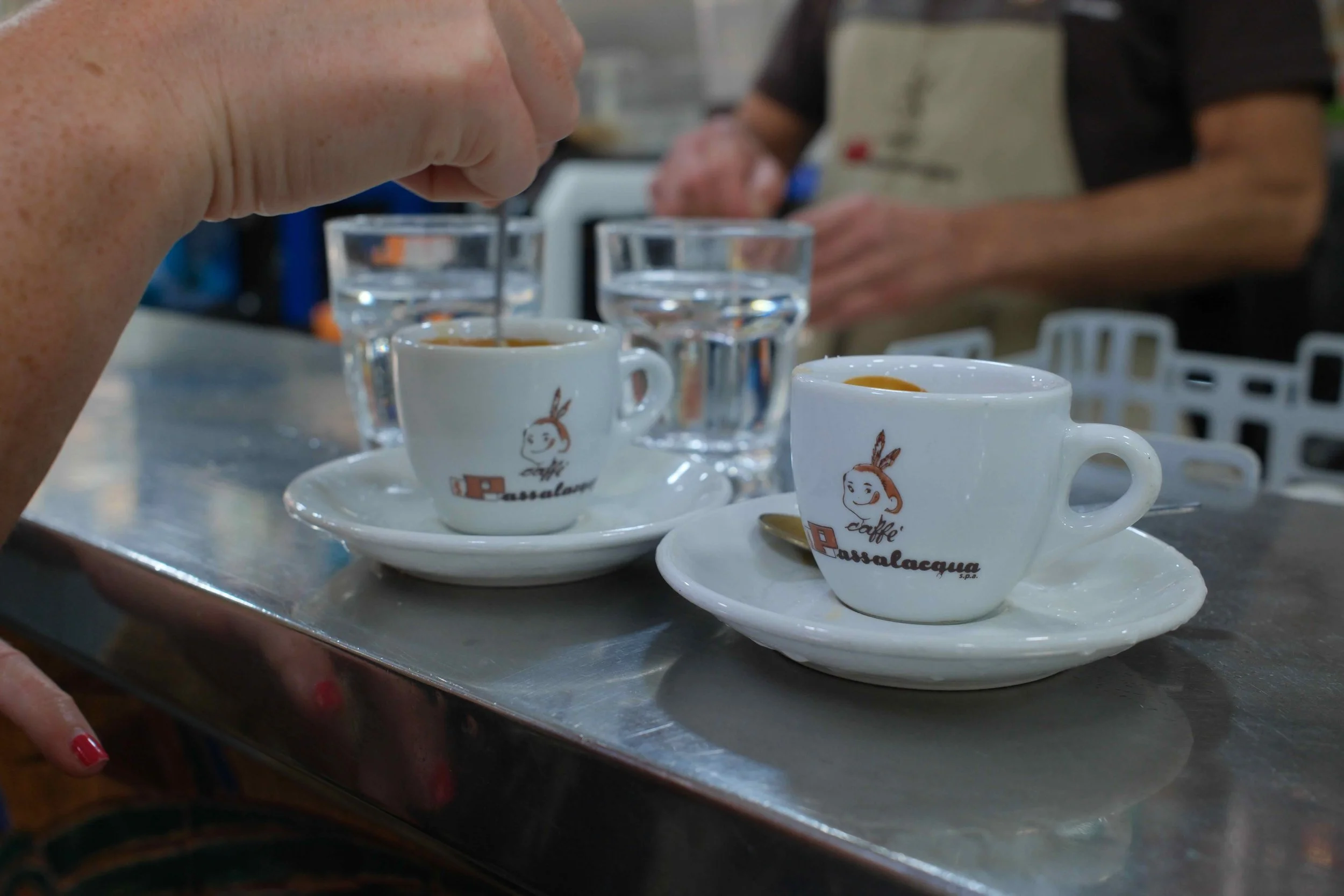Our 9-Day Road Trip Exploring Calabria - Italy’s Deep South
When we visited Florence last year, we took a cooking class with a chef named Gabrielle, who runs a wonderful little restaurant called CRU. Over the course of the day, as we kneaded pasta and simmered sauces, he told us about his home region of Calabria. He described it as a place of rugged coastline, brilliant weather, amazing beaches, and food even better than what we were eating in Tuscany — but hardly touched by tourism.
Up to that point, we’d barely heard much about Calabria. But Gabrielle’s stories stuck with us, and once we started reading more about the region, we were hooked. The promise of authentic Italian food, unspoilt scenery and a quieter pace of life was exactly what we were looking for in our next Italian adventure.
In this guide
Our Route and Itinerary
Day 1 - Early morning flight from Gatwick to Naples to grab our rental car, pop into Pompeii for lunch and stay in Paola for the night (3.5 hours drive)
Day 2 - Drive down to Tropea, stopping in Falerna Scalo for a fish lunch. Walk around and explore Tropea in the evening (2 hours drive)
Day 3 - Explore the beaches of Costa Degli Dei and pop into Pizzo in between for some of the famous Tartufo. Dinner in Tropea
Day 4 - Spend the whole day on a private rented boat exploring the coast and Capo Vaticano. Dinner in Tropea.
Day 5 - Drive to our next base, Vila San Giovanni. We visited Nduja San Donato in the afternoon, went for an evening walk and gelato in Reggio Calabria, and then had dinner back in Vila San Giovanni. (1.5 hours drive)
Day 6 - Explored Scila’s fishing town and beaches and fell completely in love with the place
Day 7 - Scila Beach in the morning and then drive to Fiumefreddo Bruzio, explore the small town and then dinner at Erika’s house (our Airbnb host). (2 hours drive)
Day 8 - Cooked pasta in the morning for our YouTube channel and then headed to the beach for the day. Poopped into San Lucido for a gelato and then back to the Airbnb to cook more pasta and watch the sunset.
Day 9 - Drive to Naples in the morning; explore the city whilst eating lots of pizzas. (4 hours drive)
Day 10 - Walk around Naples again in the morning, grabbing our last pizza for lunch and then heading to the airport to fly home.
Driving past Mount Vesuvius
Total drive time: 23:14 hours (includes all the driving to beaches and other small towns for lunches, etc)
Total distance covered: 1294km
Avg speed: 56km/h
Car: MG3 Hybrid
Fuel spend: €140 (approx)
Toll spend: €12 (approx)
Getting to Calabria
Getting into Calabria from London isn’t the most straightforward. The region has two airports: Reggio Calabria and Lamezia Terme, and 2 airlines fly from London.
Ryanair operates direct flights to Reggio Calabria every Saturday and Wednesday from Stansted, usually on aircraft operated by Malta Air. Prices tend to sit around £250–350 return.
TUI offers a Saturday flight to Lamezia Terme from Gatwick, but it’s generally more expensive, often £300–400 return.
Both airports are small, and flight options are limited, which probably helps keep Calabria as charmingly untouristy as it is.
Since we love driving (and pizza), and knowing that a car is essential to explore Calabria properly, we decided to do it our way: fly in and out of Naples with Easyjet and make a road trip of it. This gave us the perfect excuse to end the trip with some proper Neapolitan pizza and stop in a few random towns along the way.
Our plan was to get into Naples early, pick up our car and hit the road straight away to get down to Calabria.
Where we visited in Calabria
Below, we’ll take you through everywhere we stayed and visited during this trip.
Pompeii
Now, Pompeii isn’t in Calabria, but it sits conveniently on the route between Naples and our first stop, so we thought it would be a shame not to swing by. We didn’t set aside time to explore the ruins properly — no tickets, no guided tour. Instead, we drove as close to the site as we could, caught a glimpse of some of the ancient walls and buildings from the outside, then parked up for a quick lunch.
Pasta Pomodorro with a Crodino Spritz in Pompeii
We found a random restaurant nearby and ordered a simple plate of tomato pasta. There’s something special about eating tomatoes grown in the volcanic soil of Mount Vesuvius, which looms over the whole area.
This is the heartland of San Marzano tomatoes, prized for their sweetness and depth of flavour, so starting our trip here, with a plate of pasta pomodoro and a view of Vesuvius in the distance, felt like the perfect way to ease into southern Italy.
Paola
“You stayed in Paola? Why?” — a bartender in Tropea, looking utterly confused
The drive from Naples to Tropea, the heart of Calabria’s coastline, is very long (around 6 hours). So we did what we always do: zoomed around Google Maps, scrolled through Airbnb listings, and picked a random little town that looked promising. That’s how we ended up in Paola.
It’s a quiet, very local town that seems to attract mainly older Italian holidaymakers. But we found it absolutely charming. Life moves slowly here, with sleepy piazzas, great little coffee bars, and lovely views out over the Tyrrhenian Sea.
Paccheri with swordfish (Pesce Spada)
We had dinner at a restaurant called Vecchia Paola (a recommendation from our Airbnb host), and even now we’d say it was one of the best meals of the whole trip. Simple, seasonal and perfectly cooked.
A common sight across Southern Italy, men sat around, reminiscing
Falerna Scalo
On our way down to Tropea, we made a quick stop in Falerna Scalo for lunch. We didn’t explore the town itself. It seemed like a small, functional coastal place, but we’d heard good things about a seafood spot here and couldn’t resist.
Antipasto Dello Chef €20 - Marevivo La Pescheria Bistrot di Mare
The restaurant was called Marevivo La Pescheria Bistrot di Mare, and it did exactly what we were hoping for. We ordered the seafood antipasti platter, which you’ll find in plenty of restaurants around Calabria. A generous spread of marinated fish, prawns, octopus, and more, it was fresh, light and full of flavour, the perfect way to break up the drive.
At 2pm, everything will be closed
Tropea
Tropea is the most popular destination for visitors to Calabria, and it’s easy to see why. The town is stunning, with golden beaches, crystal clear water, and a dramatic clifftop historic centre that looks like something out of a postcard. It’s also the perfect base for exploring the Costa degli Dei, a stretch of coastline dotted with some of the most beautiful beaches in Italy.
Drone view of Tropea
Tropea is made up of three distinct areas:
The historic centre perched on the cliff edge
A seaside promenade running along one side below with several lidos
The free beach stretching out on the other side
It’s a small town and you can comfortably explore it all in a couple of hours, wandering between cobbled streets, cafes, bars, restaurants, and the string of beach lidos below. Every evening ends with a spectacular sunset over the sea, a view you’ll never get tired of.
Tropea beach
We stayed here for three nights, using it as a base to visit other parts of the coastline nearby while still having time to soak up Tropea’s charm.
Read our full guide to Tropea here (coming soon).
Aperitivo with views of sunset and Stromboli (a volcano island)
Tropea Highlights
The Costa degli Dei, or “Coast of the Gods”, is a breathtaking 55km stretch of coastline along the southeastern edge of the Tyrrhenian Sea. It’s known for its crystal-clear turquoise waters, dramatic cliffs, and soft sandy beaches that are far less crowded than other parts of Italy. There are plenty of beaches to choose from, each with its own character, and it’s easy to hop between them by car. Our favourite was Spiaggia Michelino, a hidden gem just outside Parghelia, where the water is unbelievably clear and the atmosphere is blissfully quiet.
One of the best days of our trip was the day we rented a boat to explore the coastline from the water. Even without a boating licence, it’s easy to hire a small motorboat in Tropea and spend the day sailing along the Costa degli Dei, stopping wherever you like for a swim or to explore hidden bays and coves. We spent the morning around Capo Vaticano, marvelling at the sheer cliffs and sparkling water, then headed north of Tropea in the afternoon before drifting back to the main beach. We packed a bottle of local wine and a couple of freshly made panini from a butcher in town and enjoyed lunch on the boat, anchored just off the coast. It was simple, peaceful, and easily one of the highlights of the trip.
Spiaggia Michelino
Sailing the coast with some local wine
Pizzo
Just a short drive from Tropea, you can visit Pizzo, an even smaller and quieter town perched on the coast. Pizzo is most famous for its tartufo gelato, a decadent ball of ice cream with a molten chocolate centre, dusted in cocoa. You’ll find plenty of little gelaterias in the main square serving this Calabrian speciality, each claiming theirs is the original. It’s worth the trip just to sit in the piazza with a tartufo and take in the laid-back charm of the town.
Tartufo di Pizzo
Pizzo
Spilinga
Spilinga is best known as the heart of ’Nduja production, the fiery, spreadable Calabrian sausage that has become famous far beyond Italy.
We didn’t come here to explore the town itself, though. We were welcomed by ‘Nuduja San Donato, a family business, to visit their production facility. Antonio, who manages the operation, welcomed us and took us through the whole process, from processing and seasoning the pork to packaging the finished product.
‘Nduja being smoked and seasoned
Even though one of us doesn’t eat pork, it was fascinating to see how this iconic ingredient is made. In June, the focus shifts to cultivating the local Calabrian chilli peppers (peperoncino), which give the region’s food its distinctive heat and are an essential ingredient in ’nduja. It was clear just how much care and tradition go into producing both.
Read our full article about ‘Nduja San Donato here (coming soon)
Villa San Giovanni
This was another town where locals couldn’t quite understand why we’d chosen to stay there, and once again, the answer was simple: we found a nice Airbnb somewhere random.
Vila San Giovanni is known mostly as the main port for ferries to Sicily, since it sits at the closest point between mainland Italy and the island. We chose it because it was perfectly located between Reggio Calabria and Scila, both of which we wanted to visit, and after a few nights in a tiny room in Tropea, we were craving a bit more space. The Airbnb we found was ideal. Spacious, comfortable, and, crucially at this stage of the trip, equipped with a washing machine.
Our Airbnb in Vila San Giovanni
The town itself is very functional, not particularly picturesque, but we did stumble across an incredible little arancini shop called L’approdo that more than made up for it (surprisingly, it stays open during the afternoon Riposo too).
Reggio Calabria
Reggio Calabria is the largest city in the region and its main economic and industrial hub. The city has a bustling high street lined with all the usual shops, and a long, beautiful promenade with brilliant views across the Strait to Sicily and Mount Etna in the distance. The seafront is dotted with plenty of restaurants where you can sit, eat and watch the sunset.
Views of Sicily
We didn’t spend too much time here, being a busy city, it didn’t quite fit the slower vibe we were after on this road trip. But it’s easy to see how it would make a good base for exploring the area. There are a few notable museums and statues worth visiting, if you have the time.
Views of Sicily and Mount Etna
Our stop here was mainly for one thing: gelato. We visited Cesare, a famous gelateria that lived up to its reputation … incredible.
Gelato from Cesare
Afterwards, we searched for somewhere to have dinner but in the end decided to head back to Villa San Giovanni and eat at a local restaurant there instead.
Scilla
Scilla was hands down our favourite place of the whole trip; we both completely fell in love with it. This charming little seaside town clings to the cliffs along a rugged stretch of coastline and has so much to offer that we could easily have spent a few nights here.
Chianalea
Scilla is made up of three distinct areas. At the top is San Giorgio, the main town centre and old town, with its winding streets, restaurants, residential squares, cafés and sweeping views of the sea.
Below, there’s the wide beach lined with lidos, offering plenty of space to stretch out and swim in crystal-clear water. And on the other side of the headland is Chianalea, the old fishing district. Here, rustic houses and restaurants seem to rise straight out of the water, their weathered walls and narrow alleys giving the whole area a wonderfully atmospheric, almost timeless feel.
Scila beach
We spent hours in Chianalea just watching the world go by, enjoying fresh seafood and soaking up the serene beauty of it all.
Scilla is known for its swordfish, and the swordfish sandwiches here are a must, best enjoyed with a glass of wine at one of the small bars overlooking the sea. It’s the perfect place to relax and savour everything we love about southern Italy.
Read our full guide to Scila here (Coming soon)
Fiumefreddo Bruzio
Fiumefreddo Bruzio was the second-to-last stop on our trip, another place that a random Airbnb brought us to (this time recommended by another travel blog)
Fiumefreddo Bruzio
We absolutely loved it. The old town sits high in the hills on a dramatic cliff edge, overlooking the beach and offering spectacular sunset views. Down below, by the coastal road, is the more residential part of town, and along this stretch you’ll find plenty of quiet, uncrowded beaches. It’s a very local area, with the old town attracting mainly Italian holidaymakers. There are only a handful of restaurants and cafés, which keeps it peaceful and unspoilt. A perfect place to simply relax, read a book, spend time on the beach, and soak up authentic seaside life.
Our Airbnb here was small but beautiful, with a well-equipped little kitchen and a private terrace with stunning views of the coastline. We spent our time dining at our host’s house one evening, an unforgettable experience and cooking simple, local pasta dishes in the kitchen. This stop was less about exploring and more about slowing down, enjoying the food, and letting the Italian vibes sink in.
Check out our YouTube Video about cooking Italian pasta in our Airbnb
Our Airbnb in Fiumefreddo Bruzio
Naples
Our final stop was Naples, and for us, Naples is all about one thing: pizza. We’re obsessed, and every time we’re here, we try to eat as much of it as physically possible.
Mount Vesuvius
We stayed in a lovely B&B in the Vomero district. This was actually our second visit to Naples, having previously flown here for a road trip through Puglia back in 2019. Naples has become our go-to starting and ending point for southern Italy trips, thanks to its energy, charm and, of course, its legendary food.
Spanish Quarter (Quartieri Spagnoli) - Naples
After checking in and freshening up, we headed out for an evening wander. We started at Belvedere San Martino overlooking the city and made our way down towards the Spanish Quarter (Quartieri Spagnoli) to see the famous Diego Maradona mural and the general chaos of the streets. From there, we strolled through the bustling Via Toledo, into the atmospheric historic centre (Centro Storico), and back up to Vomero for the night.
L'Antica Pizzeria Da Michele - Naples
Naturally, there was pizza. That evening, we had a classic Neapolitan pizza from Gino Sorbillo as well as L'Antica Pizzeria Da Michele. The next day, just before our flight, we stopped by Diego Vitagliano Pizzeria, ranked number two in the world for pizza.
Read our full guide to Naples here (Coming soon)
Gino e Toto Sorbillo - Naples
Quick Tips For Travelling Around Calabria
Rent a car, it will be the best way to explore the area with freedom, although do be careful. The Italians drive like crazy!
A guide to driving in Italy (coming soon)
Never arrive hungry in a town between 1-4 pm. Everything shuts down, and you’ll struggle to find any shops or restaurants open to serve you anything. Make sure you eat before leaving your previous destination.
Learn about Italian eating and coffee culture before you go (luckily, we have guides for both):
It gets hot! Buy a beach umbrella early in your trip (we got ours for 15 euros) to take with you to the beach. Also, remember to take a water bottle and beach bags, as a lot of the lovely beaches are rural with no facilities.
Always be prepared for the beach
Food and Drink you Have to Try in Calabria
Calabria’s cuisine is simple, bold and deeply tied to the land and sea. Here are some of the essential things to try and what to know about dining here:
What to Eat:
Cornetto — The typical Italian breakfast pastry, similar to a croissant but softer and often filled with jam, custard, chocolate or pistachio spread. Perfect with a morning cappuccino.
Tropea onions (Cipolla Rossa di Tropea) — Sweet, mild red onions grown around Tropea, often served raw in salads, grilled, pickled, or even made into jam. You will also find them in pasta dishes.
’Nduja — Calabria’s most famous export: a fiery, spreadable pork sausage made with local chillies. Spread it on bread, stir it into pasta or add it to seafood.
Peperoncino (chilli) — Calabrians love heat. You’ll see chillies fresh, dried or infused into oils. Also a vital ingredient for ‘Nduja.
Panini — Local butchers (macellerias or salumerie) often double as sandwich shops, making fresh panini with regional meats, cheeses and vegetables. Perfect for a quick lunch.
Mortadella and Bresaola were our meats of choice
Provola cheese and Aubergine (Melanzana) were our main fillings
Fried seafood (Fritto misto di mare) — Near the coast, you’ll find cones of lightly fried calamari, prawns, anchovies and small fish, perfect to snack on while walking by the sea.
Seafood antipasti platters — A typical starter on the coast, featuring a variety of marinated, grilled and fried seafood: prawns, octopus, anchovies, clams and more. Fresh, light and full of flavour.
Swordfish (Pesce Spada) — A Calabrian favourite, often grilled or pan-seared and served simply with olive oil, lemon, and herbs, or paired with chillies and capers in a bold sauce.
Simple pastas — Don’t miss regional pasta dishes featuring ingredients like sardines, wild fennel, tomato, chilli and ’nduja.
Fileja - Long, thick, slightly twisted tubes of pasta, made by wrapping dough around a thin stick (a ferretto). It’s the quintessential Calabrian pasta, often served with nduja, goat ragu, or simple tomato sauce.
Paccheri - Large, wide tubes of pasta (similar to Riggatoni), often smooth (lisci) or slightly ridged (rigati).
Gelato — Calabria’s gelaterie showcase distinctive regional flavours like bergamot, fig and liquorice, a sweet way to experience the area’s unique ingredients.
Fritto misto di mare
Panini from a macelleria
What to Drink
Cirò wine — Calabria’s most famous wine, a robust red (or occasionally white) made in the hills near Crotone.
Local white wines — Crisp, refreshing whites pair beautifully with seafood, often made from Greco or Mantonico grapes.
Espresso — Like elsewhere in Italy, coffee here is short, strong and usually enjoyed standing at the bar. If a straight espresso is too much for you, try ordering a Macchiato (espresso with a dash of milk).
Cappuccino — Typically only drunk in the morning, a frothy cappuccino is a common choice for breakfast, often with a pastry.
Moka pot coffee — At home or in your Airbnb kitchen, you’re likely to find a moka pot for brewing strong, aromatic coffee the Italian way.
Crodino — A classic Italian non-alcoholic aperitif, lightly bitter and very refreshing over ice.
Sanbittèr — Another alcohol-free aperitif with a vibrant red colour and a pleasantly bitter citrusy taste.
Moka pot coffee at our Airbnb
Cappuccinos and cornettos for breakfast
Dining Culture
Meals are leisurely and social, so expect to take your time.
Many restaurants close in the afternoon and reopen for dinner around 7:30–8 pm.
If you’re eating before 9 pm, you’ll likely be one of the first in the restaurant.
English is rarely spoken in smaller towns, but staff are usually friendly and helpful. Learning a few Italian phrases goes a long way.
A traditional manual espresso machines
Traditional espresso, served already with sugar and a small glass of sparkling water - Cafe Mexico, Naples
Overall Thoughts from Our Calabria Road Trip
We absolutely loved this road trip. Calabria isn’t as well known as a holiday destination, but it really should be. We travelled in early July, which may have helped — nothing was crowded, we never struggled to get a table at restaurants, and the beaches were wonderfully spacious, with plenty of room right by the water.
It’s worth noting that not much English is spoken in this part of Italy, so it really helps to learn a few Italian phrases. That said, everyone we met was kind, welcoming and happy to help where they could. The food was incredible throughout — lots of fresh seafood, pasta, and plenty of rustic southern Italian flavours. We spotted a few good-looking pizza places too, though we saved our pizza appetite for Naples at the end.
A car is absolutely essential for this kind of trip. Having one gives you the freedom to explore random little towns, quiet beaches, and to really experience the slower pace of Italian life.
It’s not an expensive region compared to more famous parts of Italy, and if you have the time and are comfortable driving, we think a road trip through Calabria should definitely be high up on your list.


